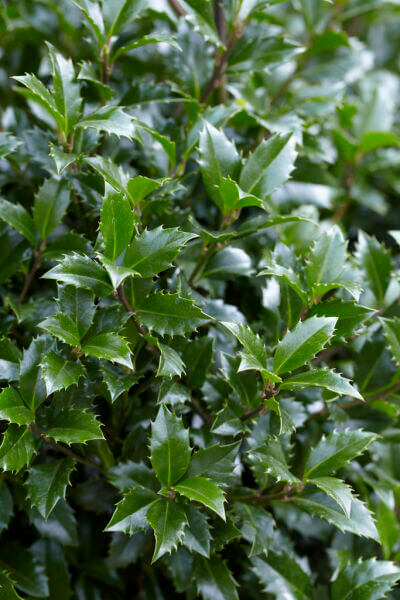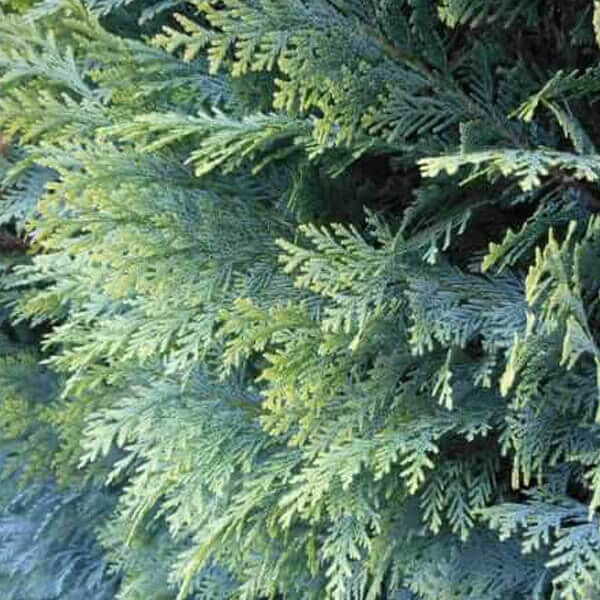Best Hedging Plants For School Grounds
Best Hedging Plants For School Grounds
Blog Article
Hedge Plants For Walkway Borders
Boost your garden's allure with lavish hedge varieties such as Yew (Taxus), Thuja, Laurel, Photinia, and Bamboo, celebrated for their structural stability and environmental advantages.
Yew and Thuja provide evergreen protection and winter resilience, while Laurel provides rapid growth and broad, aromatic leaves.
Photinia adds seasonal beauty with its lively red foliage, and Bamboo lends a low-maintenance, tranquil ambiance.
These hedges enhance air quality, reduce noise, and create tranquil, personal areas.
Proper planting, spacing, and upkeep ensure vigorous development and ecological harmony.
Check out how these lavish ranges can raise your garden's beauty and wellness.
Secret Takeaways
Transform Your Garden With Lush Hedge Varieties
- Select Yew for its dense, evergreen development and unparalleled durability.
- Opt for Laurel for its fast development and broad leaves, guaranteeing fast privacy.
- Pick Photinia for its lively seasonal foliage, which turns a striking dark red.
- Utilize Bamboo for a low-maintenance, winter-hardy hedge with aesthetic appeal.
- Area plants 2-3 per meter and prune frequently for optimal growth and health.
Popular Hedge Plants
When transforming a garden with rich hedge ranges, it's vital to consider popular hedge plants such as Yew, Thuja, Laurel, and Photinia due to their distinct qualities and advantages.
Yew (Taxus) is extremely respected for its durability and thick, green growth, making it a prime choice for sustaining landscapes.
Thuja is kept in mind for its evergreen foliage and robust winter season strength.
Photinia includes seasonal vibrancy with red leaves that darken with time, developing vibrant visual appeal.
Laurel uses quick development and aromatic, broad leaves, suitable for fast personal privacy.
In Addition, Bamboo is an outstanding choice for ambiance, offering a low-maintenance, winter-hardy option that enhances the garden's visual with its classy, swaying walking sticks.
These selections accommodate a variety of horticultural needs and choices.
Benefits of Garden Hedges
Garden hedges use a multitude of advantages, making them a valuable addition to any landscape. These natural barriers are cost-efficient to execute and provide significant wind defense, improving air circulation and adding to noise decrease. The dense foliage of hedges like Thuja and Beech ensures personal privacy by blocking exposure, developing a peaceful and secluded environment.
Hedges likewise play a crucial function in microclimate policy, supplying a stable environment that cultivates plant growth and decreases temperature variations. Their elaborate leaf structures filter pollutants, enhancing air quality and contributing to a much healthier garden ecosystem.
Furthermore, hedges stand out in noise reduction, soaking up and deflecting acoustic waves to lower ambient noise levels. This double functionality of offering both acoustic and visual privacy improves the overall serenity and visual appeal of any garden.
Planting and Maintenance Tips
For a successful hedge, precise preparation of the planting location is crucial. Ensure the soil has appropriate pH and drain to support strong root advancement.
Area the plants appropriately for the selected types. Water the hedge often throughout its preliminary development stage, changing as needed with seasonal modifications.
Implement a methodical insect control and illness avoidance method, utilizing natural or chemical treatments when required. Routinely examine for aphids, termites, and fungal infections.
Apply mulch to keep moisture and suppress weeds. Seasonal pruning promotes dense growth and air circulation, important for plant health.
Following these guidelines will help you cultivate a vibrant, well-kept hedge that enhances the beauty of your garden.
Spacing and Cutting Standards
Spacing and Cutting Standards
Correct spacing and cutting are essential for cultivating healthy, visually appealing hedges. Adequate spacing makes sure each plant gets sufficient nutrients, light, and airflow.
Follow these guidelines for optimum hedge maintenance:
- Spacing: Position hedge plants 2-3 plants per meter to encourage robust development.
- Pruning Strategies: Regular pruning is essential for maintaining desired hedge height and shape. Trim brand-new development in summer and cut down older wood during winter.
- Seasonal Care: Adjust cutting approaches and schedules according to seasonal requirements to guarantee plant health.
- Hedge Height: Regularly display and cut to preserve the wanted hedge height and achieve consistent looks.
Following these actions will ensure your hedge prospers, enhancing both the appeal and performance of your garden.
Choosing the Right Hedge
Picking the Right Hedge
Selecting the suitable hedge includes assessing aspects such as fully grown height, foliage density, and environmental resilience. Successful hedge plant choice requires understanding each types' development characteristics and site-specific versatility.
For example, Yew (Taxus) offers exceptional durability and dense growth, while Thuja is significant for its winter season resilience. Additionally, considering upkeep requirements is vital; fast-growing types like Laurel or Privet demand regular trimming, whereas low-maintenance alternatives like Bamboo or Ivy may be preferable for those seeking minimal upkeep.
Environmental aspects such as soil type, light schedule, and wetness conditions should also guide the selection process. This cautious technique makes sure the picked hedges will grow, providing both practical and visual advantages to the garden landscape.
Shipment and Planting Advice
To ensure your hedge plants grow, they need to be provided by specialized carriers and planted without delay upon arrival.
Follow these important steps for successful planting:
- Soil Preparation: Enrich the soil with organic matter to enhance drainage and nutrient material.
- Planting Depth: Produce a trench twice the width and equal to the depth of the root ball.
- Watering Techniques: Water completely after planting, keeping the soil regularly wet but not filled.
- Mulching: Use a layer of mulch to keep wetness and reduce weeds.
Consumer Assistance and Service
Provided the essential role of prompt assistance in horticultural pursuits, our consumer assistance team is offered six days a week through telephone, email, and social networks to provide expert suggestions and quickly address any issues. Their commitment to fast reaction times makes sure client satisfaction by solving queries associated with plant health, optimal planting methods, and maintenance schedules.

Response Time
Telephone
Within 24 hr
This thorough support group, enhanced by an excellent 9.3/ 10 customer rating, highlights our commitment to enhancing the gardening experience for every customer.
Regularly Asked Concerns
For How Long Does It Take for Hedge Plants to Establish?
Hedge plants usually need one to three years to end up being fully developed, with the exact period varying by species and growing conditions.
Efficient care throughout this vital period is vital for robust growth. Consistent watering, alert weed control, and suitable fertilizer application are essential in promoting strong root development.
For example, fast-growing types like Laurel may develop faster, while slower-growing varieties such as Yew may take longer. Diligent maintenance speeds up the facility process, resulting in healthy and thick hedges.
What Are the very best Hedge Plants for Personal Privacy?
The concern of the very best hedge plants for privacy involves examining evergreen and deciduous alternatives.
Evergreen hedges like Thuja, Laurel, and Cypress provide year-round coverage, guaranteeing constant personal privacy.
On the other hand, deciduous hedges such as Beech use seasonal privacy, shedding leaves in colder months.
Key maintenance ideas for personal privacy hedges include regular cutting, fertilizing in spring, and appropriate spacing-- normally 2 to 3 plants per meter.
In addition, constant watering and thorough weed elimination are vital for promoting healthy, thick development.
Can Hedge Plants Bring In Wildlife to My Garden?
Yes, hedge plants can attract wildlife to your garden by providing vital benefits like shelter, food, and nesting sites, consequently boosting regional biodiversity. Yew, holly, and laurel are excellent for attracting birds, while ivy supports a range of pests.
Nevertheless, it's essential to note that there are some drawbacks, such as increased upkeep to handle insects and regular maintenance. Carefully selecting and maintaining hedge varieties can help stabilize these advantages and disadvantages, eventually promoting a sustainable and vibrant environment in your garden.
Are There Any Blooming Hedge Plants Available?
Yes, there are flowering hedge plants readily available that can improve the appeal of your garden.
For instance, Elaeagnus, also called Olive Willow, produces fragrant white flowers in the fall, including a touch of beauty.
Photinia, another popular option, showcases dynamic red leaves that grow into an abundant green, creating a dynamic visual result throughout the seasons.
To guarantee these plants thrive, it's vital to practice proper pruning techniques and seasonal upkeep, such as cutting new development in the summertime and cutting down in the winter season.
These steps will help preserve the health and aesthetic appeal of your blooming hedges.
How Do I Avoid Insects in My Hedge Plants?
To prevent bugs in hedge plants, employ natural insect control methods and preserve correct hedge care. Introduce useful pests like ladybugs, which prey on hazardous bugs, to create a balanced community.
Frequently inspect your hedges for indications of problem and immediately get rid of any afflicted parts to avoid the spread. Ensure the health of Article source your hedges by applying balanced fertilizers and offering sufficient water.
Use mulching to keep soil wetness and correct spacing to lower plant tension and promote robust development. These practices jointly assist in minimizing pest issues and maintaining a healthy hedge.
Conclusion
In essence, choosing the right hedge ranges such as Yew, Thuja, and Laurel can change any garden into a serene sanctuary. These plants supply year-round greenery, enhance aesthetic appeal, and deal useful benefits like noise reduction and wind security.
Appropriate planting techniques, accurate spacing, constant watering, and seasonal trimming are important for optimal development.
Reputable delivery services and expert customer assistance guarantee a seamless experience from purchase to planting, making it easier than ever to elevate your outside area.
Garden hedges provide a wide range of advantages, making them an important addition to any landscape. These natural barriers are economical to implement and supply substantial wind security, enhancing air blood circulation and contributing to noise decrease. The dense foliage of hedges like Thuja and Beech makes sure personal privacy by obstructing presence, producing a serene and remote environment.

Pruning Techniques: Routine pruning is vital for keeping preferred hedge height and shape. Trim new growth in summer season and cut back older wood throughout winter season.
Report this page